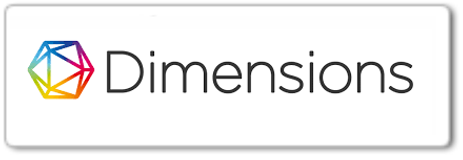IMPLEMENTASI SUPERVISI PELAKSANAAN NEW PERTEACHING DALAM PEMBELAJARAN DI SD ISLAM AL-AZHAR 25 SEMARANG
DOI:
https://doi.org/10.34125/jmp.v10i3.814Keywords:
Supervisi Pembelajaran, Peer Teaching, Kurikulum Merdeka, Pembelajaran Integratif, Supervisi GuruAbstract
The focus of the research is directed at three main aspects: the implementation of preliminary activities, core activities, and closing activities in accordance with the process standards of the Merdeka Curriculum integrated with the school’s curriculum. This research employed a qualitative descriptive approach with the subject being a Grade IV-B teacher. Data were collected through observation, structured interviews, and document analysis, and were analyzed using Miles & Huberman’s model consisting of data reduction, data display, and conclusion drawing with verification. Data validity was ensured through source and technique triangulation. The results indicate that in the preliminary stage, the teacher was able to start the lesson effectively using stimulating questions and initial assessment, although improvement is needed in connecting the material to students’ daily life experiences. In the core stage, the teacher applied active, integrative, and interactive learning steps using student-centered models, yet adaptation to individual differences among students was still limited. In the closing stage, the teacher conducted reflection and collaboratively drew conclusions with students. This study provides empirical insights into the application of new peer teaching integrated with the Merdeka Curriculum in an Islamic-based school context.
References
Azra, A. (2002). Paradigma baru pendidikan nasional: Rekonstruksi dan demokratisasi. Jakarta: Kompas.
Adeoye, M. A., Obi, S. N., Sulaimon, J. T., & Yusuf, J. (2025). Navigating the Digital Era: AI’s Influence on Educational Quality Management. JERIT: Journal of Educational Research and Innovation Technology, 2(1), 14–27. https://doi.org/10.34125/jerit.v2i1.18
Anwar, C., Septiani, D., & Riva’i, F. A. (2024). Implementation Of Curriculum Management Of Tahfidz Al-Qur’an at Al-Qur’an Islamiyah Bandung Elementary School. INJIES: Journal of Islamic Education Studies, 1(2), 91–96. https://doi.org/10.34125/injies.v1i2.11
Ayuba, J. O., Abdulkadir, S., & Mohammed, A. A. (2025). Integration of Digital Tools for Teaching and Learning of Islamic Studies Among Senior Secondary Schools in Ilorin Metropolis, Nigeria. INJIES: Journal of Islamic Education Studies, 2(1), 1–9. https://doi.org/10.34125/injies.v2i1.16
Ayuba, J. O., Abdullateef, L. A., & Mutathahirin, M. (2025). Assessing the Utilization of Information and Communication Technology (ICT) Tools for Teaching Secondary Schools Islamic Studies in Ilorin, Nigeria. JERIT: Journal of Educational Research and Innovation Technology, 2(1), 28–37. https://doi.org/10.34125/jerit.v2i1.22
Bandura, A. (1986). Social foundations of thought and action: A social cognitive theory. Englewood Cliffs, NJ: Prentice-Hall.
Woolfolk, A. (2009). Educational psychology (11th ed., pp. 260–261). Boston: Pearson Education.
Beane, J. A. (1997). Curriculum integration: Designing the core of democratic education. New York: Teachers College Press.
Tomlinson, C. A. (2014). The differentiated classroom. Alexandria, VA: ASCD.
Schunk, D. H. (2012). Learning theories: An educational perspective (6th ed.). Boston: Pearson.
Direktorat Jenderal Guru dan Tenaga Kependidikan. (2021). Panduan penerapan profil pelajar Pancasila dalam pembelajaran. Jakarta: Kemendikbudristek.
Drake, S. M., & Burns, R. C. (2004). Meeting standards through integrated curriculum. Alexandria, VA: ASCD.
Fogarty, R. (1901). How to integrate the curricula. Thousand Oaks, CA: Corwin Press.
Hall, T., Strangman, N., & Meyer, A. (2003). Differentiated instruction and implications for UDL implementation. Wakefield, MA: National Center on Accessing the General Curriculum.
Heacox, D. (2012). Making differentiation a habit. Minneapolis, MN: Free Spirit Publishing.
Piaget, J. (1970). Science of education and the psychology of the child. New York: Orion Press.
Kemendikbudristek. (2022). Buku saku Kurikulum Merdeka. Kemendikbudristek.
Kemendikbudristek. (2022b). Modul ajar Kurikulum Merdeka. Jakarta: Kemendikbudristek.
Kemendikbudristek. (2022c). Panduan implementasi Kurikulum Merdeka. Jakarta: Kemendikbudristek.
Koehler, M. J., & Mishra, P. (2009). What is technological pedagogical content knowledge (TPACK)? Contemporary Issues in Technology and Teacher Education, 9(1).
Mishra, P., & Koehler, M. J. (2006). Technological pedagogical content knowledge: A framework for teacher knowledge. Teachers College Record, 108(6), 1017–1054.
Mulyasa, E. (2013). Menjadi guru profesional. Remaja Rosdakarya.
Mulyasa, E. (2022). Implementasi Kurikulum Merdeka dalam pembelajaran. Jakarta: Bumi Aksara.
Sudjana, N. (2005). Dasar-dasar proses belajar mengajar. Bandung: Sinar Baru Algensindo.
OECD. (2020). Education policy outlook: Indonesia. Paris: OECD Publishing.
Pemerintah Republik Indonesia. (2014). Peraturan Pemerintah No. 103 Tahun 2014. Jakarta: Sekretariat Negara.
Pemerintah Republik Indonesia. (2007). Peraturan Menteri Pendidikan Nasional No. 16 Tahun 2007 tentang Standar Kualifikasi Akademik dan Kompetensi Guru. Jakarta: Sekretariat Negara.
Republik Indonesia. (2005). Undang-Undang Nomor 14 Tahun 2005 tentang Guru dan Dosen. Jakarta: Sekretariat Negara.
Roblyer, M. D., & Hughes, J. E. (2019). Integrating educational technology into teaching. Boston: Pearson.
Slavin, R. E. (1995). Cooperative learning: Theory, research, and practice (2nd ed.). Allyn & Bacon.
Sholeh, M. I., Habibulloh, M., Sokip, S., Syafi’i, A., ‘Azah, N., Munif, M., & Sahri, S. (2025). Effectiveness of Blended Learning Strategy to Improving Students’ Academic Performance. JERIT: Journal of Educational Research and Innovation Technology, 2(1), 1–13. https://doi.org/10.34125/jerit.v2i1.17
Saputra, W., Akbar, A., & Burhanuddin, B. (2024). Modernization of Da’wah Methods in Fostering Interest Among Young Generation (Case Study QS. Al-Ahzab Verse 46). INJIES: Journal of Islamic Education Studies, 1(2), 61–70. https://doi.org/10.34125/injies.v1i2.7
Septiani, D., Nugraha, M. S., Efendi, E., & Ramadhani, R. (2024). Strengthening Tuition Governance Towards Transparency and Accountability at Ummul Quro Al-Islami Modern Boarding School Bogor. INJIES: Journal of Islamic Education Studies, 1(2), 83–90. https://doi.org/10.34125/injies.v1i2.10
Syafii, M. H., Rahmatullah, A. . S., Purnomo, H., & Aladaya, R. (2025). The Correlation Between Islamic Learning Environment and Children’s Multiple Intelligence Development. INJIES: Journal of Islamic Education Studies, 2(1), 29–38. https://doi.org/10.34125/injies.v2i1.17
Tomlinson, C. A. (2014). The differentiated classroom. ASCD.
Tomlinson, C. A., & Imbeau, M. B. (2010). Leading and managing a differentiated classroom. Alexandria, VA: ASCD.
Trilling, B., & Fadel, C. (2009). 21st century skills: Learning for life in our times. San Francisco, CA: Jossey-Bass.
Uno, H. B. (2011). Model pembelajaran: Menciptakan proses belajar mengajar yang kreatif dan efektif. Jakarta: Bumi Aksara.
Vygotsky, L. S. (1978). Mind in society: The development of higher psychological processes. Cambridge, MA: Harvard University Press.
Downloads
Published
How to Cite
Issue
Section
License
Copyright (c) 2025 Jurnal Manajemen Pendidikan

This work is licensed under a Creative Commons Attribution-ShareAlike 4.0 International License.














